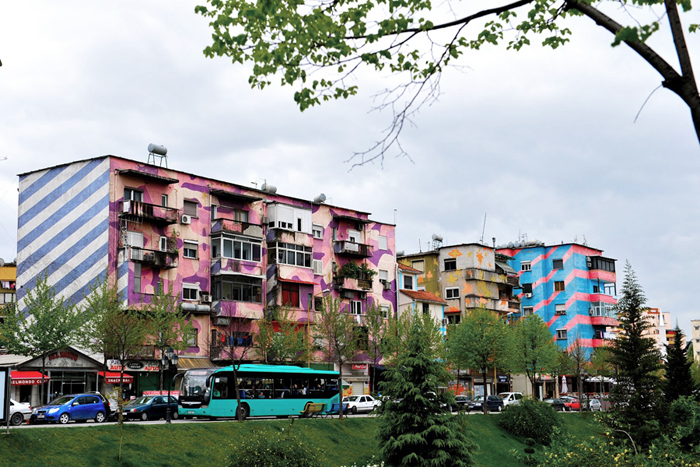
Alongside my work at Clear Village, I am a member of the LPU collective, Liga de la Partida Urbana. At LPU, we carry out urban interventions that aim to rediscover and re-invent the public space in the barrios of Caracas through multiple and diverse artistic interactions. They are intended to be expressive and perceptive, transforming the public space into something new. Although they are transitory, they help to strengthen cultural networks, connect groups of people and emphasize the cultural and artistic potential of the barrios.
The main ingredients of LPU’s interventions are the game, as a tool for communication, and paint, as a tool for modelling space. By creating lines and geometric shapes, neighbourhoods are changed both “physically” and “socially”. Public spaces are transformed into dynamic spaces, generating a dialogue between different sexes, races and cultures. The interventions are created together with the inhabitants of the area to generate interaction and a feeling of ownership; in this way the public space is valued and loved by its users.
In Macarao, a parish in the south-west of Caracas, children helped to turn a square into a playground by painting a colourful grid on the ground for “fusilao”, a traditional Venezuelan game. In San Agustin, another barrio of Caracas, the public space was transformed by painting a baseball field and hopscotch course. In both cases, it only took a bit of paint to generate a lot of activity and excitement.
Another interesting participatory urban intervention took place in Brazil last year. It was called “Luz Nas Vielas” and was carried out in Vila Brasilândia, a favela of São Paulo, by Spanish collective Boa Mistura.
Boa Mistura comes from the Portuguese words ‘buena mezcla’ (good mixture) and its 5 members describe themselves as “graffiti rockers”. They worked with local residents to reface the narrow alleys of the favela. They came up with the idea of painting catchy words with a strong concept behind them, like ‘beleza’ (‘beauty’) and ‘orgulho’ (‘pride’).
Their work resulted in an amazing illusion effect. Depending on the angle and distance, the painted words seemed to float in the alleys in 3D. “BELEZA”, “FIRMEZA”, “AMOR”, “DOÇURA”, “ORGULHO”, “BEAUTY”, “STRENGTH”, LOVE”, “CRAZY” & “PRIDE” were the concepts chosen together with residents.
This short film is a nice illustration of how Boa Mistura works and how they involved the local community in their favela intervention.

Doçura “Sweetness”. Source: Designboom
Several thousand kilometres away, the case of Tirana shows how helpful paint can be to redefine a city that was once depressed and covered in grey. The project was driven forward by artist and politician Edi Rama, former Mayor of Tirana.
As he stated in a TED talk: “Art was part of the answer, and my name, in the very beginning, was linked with two things: demolition of illegal constructions in order to get public space back, and use of colours in order to revive the hope that had been lost in my city.”
Paint was used as a tool to bring colour back to the city, both literally and metaphorically. As the intervention was taking place, people started removing the shutters from their windows and began to feel safer in the streets. A sense of communal ownership grew within the city’s neighbourhoods.
As Edi Rama put it, “paint on the walls of the city’s buildings did not in and of itself revive the economy, feed the hungry or improve the quality of life. However, it established a foundation of peace and community unity that allowed the necessary reforms to succeed, taxes to be collected and the local governmental systems to curb corruption.”

A view of a street in Tirana. Source: TED blog
All these cases show us that art, supported by community engagement and design participation, can strengthen connections within communities and boost the identity of neglected places. By using simple tools, entire neighbourhoods can be engaged and social values can be built without the need for expensive solutions.